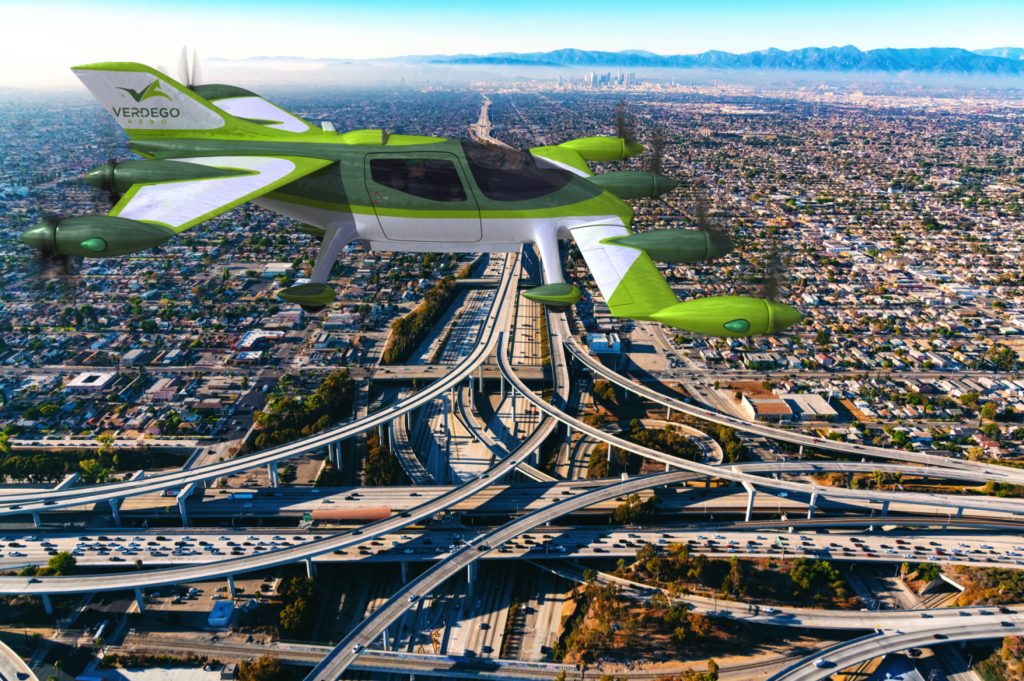Could a vehicle like a VTOL – Vertical Take-Off and Landing – aircraft find its space in the mobility industry? VerdeGo Aero believes so and its founders have been working hard to make it happen. Here’s what Eric Bartsch, COO and Co-founder of VerdeGo Aero, has to say about his company’s work in this exciting area:
How did you start VerdeGo Aero? Who are the founders?
Eric Bartsch: We are three co-founders: myself; Erik Lindbergh who comes from a very long line of innovators and pioneers in aviation and is a good friend; and Dr. Pat Anderson, who is another good friend. We have known each other for quite a while and have all been working in the electric and hybrid-electric space for quite a number of years now.
We’ve worked together on a variety of projects. I was actually able to arrange for Erik Lindbergh’s first flight in an electric plane a few years ago, and I was also working on another program when Dr. Anderson flew one of the first hybrid aircrafts about seven years ago. We have also been working on vertical take-off and landing technology, and we have been watching this space closely because it is a very exciting long-term opportunity. It could really revolutionize short-range air travel in very much the same way jet airplanes revolutionized long-range air travel.
Three things happened towards the beginning of 2017 that took this from an interesting concept that we had all been thinking about for a number of years, to an actual business opportunity.
Those three things were:
- The advance in some of the technologies we have been developing – some of the enabling technology is now ready.
- The change in the certification regulations in the US with the re-write of Part 23 of the FAA regulations. That is a big enabler for new types of aircraft that don’t really fit in the traditional template for what an aircraft or a helicopter might look like – or wouldn’t really fit the template of having either a piston engine or a turbo engine on board. All these really opens up and enables electric propulsion, hybrid propulsion and other things, and so it provides a road map for commercializing one of these vehicles beyond the development stage, taking it to market.
- The interest that Uber put into the short-range VTOL market with the Uber Elevate study that they published, and then with the Uber Elevate Conference that they held in April 2017 that I was fortunate to attend, really attracted the financial community and the investment community to this market in a way we really have never seen before.
Since then, this concept has become larger than Uber itself because it has attracted other financial players and operators into this new space, and it really validated that this was a very interesting multi-billion-dollar market: there are real customers that would like to sell this service and real consumers around the world who would like to purchase this service.
We like to joke that we are a ten-year-old company that was founded eight months ago as we have been talking about this and working on things that would enable this technology for a very long time, but it was really the three aforementioned factors that changed everything. It was amazing how these three things changed at the very same time, and that is really what took it from being an interesting idea to something to build a business around with the right environment and the right market conditions to move it forward.
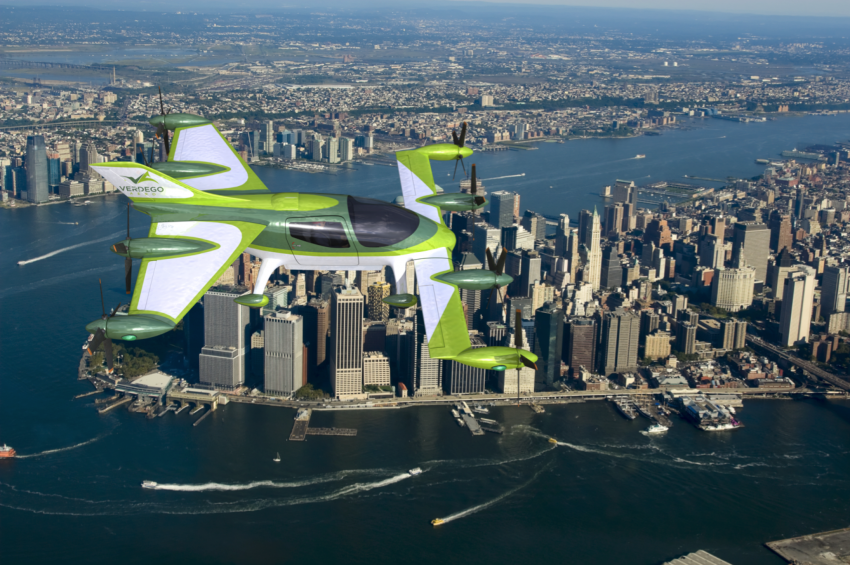
In the Photo: Rendering of a VerdeGo Aero VTOL flying. Photo Credit: VerdeGo Aero.
Flying cars have a long history, but they haven’t made much progress before. Can you tell me what is different now with VTOL? Why is this the right moment to start a company in this area?
EB: The concept of flying cars is probably 50 years old. It has been a dream for a long time to have this sort of short-range vertical take-off transportation for urban areas. I do think there are some significant differences between the current modern concept for a flying car and the concept we had in past decades. Some of those changes and differences are very important and this is the reason why, given the current initiatives and the energy put in this market, we are more likely to be successful now.
RELATED ARTICLES:
![]() Zunum Aero: making electric planes possible
Zunum Aero: making electric planes possible
by Alessandro du Bessé
![]() Ampaire electric planes: Interview with Kevin Noertker
Ampaire electric planes: Interview with Kevin Noertker
by Alessandro du Bessé
![]() Henrik Fisker Is Back: A chat on the EMotion and the future of the car industry
Henrik Fisker Is Back: A chat on the EMotion and the future of the car industry
by Alessandro du Bessé
One of the most interesting things about your VTOL is that it is hybrid electric. Can you tell me more about the technology involved and any challenges you are facing?
EB: We are hybrid electric out of necessity; in order to have enough energy in the vehicle to make it a useful vehicle for commercial use, we have to make it hybrid electric at the start. That decision was made by three people who have all flown fully-electric aircrafts and have been involved in quite a few electric aircraft programs and have been some of the pioneers of electric flights.
We are certainly passionate about electric aviation and fully electric aviation and what the future holds for that market. The reality is that the battery industry needs to have some step changes in energy density for a practical commercial VTOL vehicle to be feasible. Batteries are currently very viable for aircrafts that are more like a motor glider or a light training recreational aircraft where the aircraft can be slow moving and very energy efficient and very short range.
We are very well connected with the innovation that is happening in batteries, but the types of changes we need are going to be unpredictable. It did not make sense for us to plan this aircraft to be fully operating from day one solely on batteries. What we do envision is this aircraft will be hybrid electric from the start and all the propulsion – 100% of the propulsion – is coming from electric motors.
As soon as fuel cells and batteries or super capacitors are capable of delivering the energy density that we want, we will of course make that conversion and it will be an easy one, but it will only happen when those other sources of electrons are lighter and more efficient than the current sources of electrons we are working with.
Improvements in battery energy density are between 3% and 5% per year. I look at the promises the battery industry was making when I was flying the first electric aircraft – the purely electric aircraft I was working on back in 2013 – and there were all these promises of a 5-10X improvement in battery energy density. I firmly believe that will happen in the future; there are enough smart people and enough different approaches that someone is going to figure out how to do that. The reality is that when I stand here in 2018 and look back at the last couple of years, the technology is actually moving 3-5% per year and this was true for a while before 2013.
What we are really talking about is unpredictable step changes in batteries. There will at some point be a revolution when someone will come up with a battery technology that could be commercialized, that is safe and could be scaled up. That will be a massive step forward, but it is impossible to predict whether that is going to happen in three weeks or three years from now. We want to get our aircraft in service with the technology that we know and that we can commercialize. That will give us an easy upgrade path to use these new technologies when they are ready and approved.
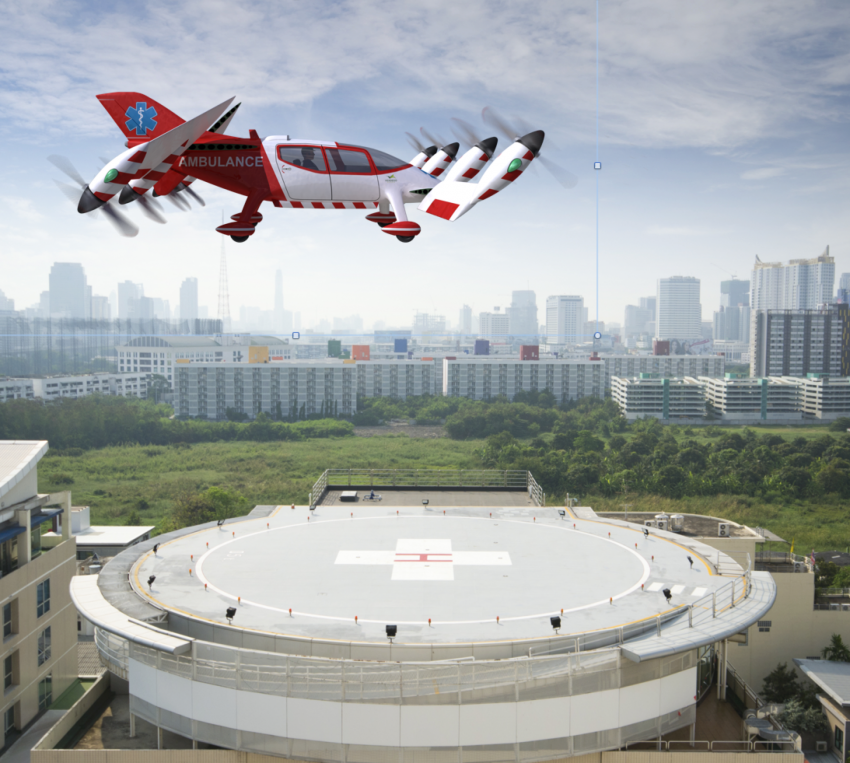
In the Photo: Rendering of a VerdeGo Aero VTOL ambulance. Photo Credit: VerdeGo Aero.
On your website I have seen a few different renderings of VTOL vehicles, can you tell me more about these?
EB: We are thinking ahead about the two biggest markets: one is moving people around, and we see that as a huge opportunity for the mega cities around the world where there is a lot congestion on urban transportation; the other significant opportunity is for express cargo and parcel carriers since their business really depends on having the last possible pick-up at the end of the day and the first possible delivery in the morning.
There are industries worth billions of dollars that have built up around the rapid delivery of express mail and express packages. Our aircraft can be used in exactly the same way.
How far are you with your project? When will the first prototypes be flying? What is your timeline?
EB: We have scale prototypes flying now. We have larger prototypes coming in line over the course of 2018. We will get to the point of unmanned prototypes and single-seat prototypes that fly and represent all the aspects of our program in its third year. By the fifth year, we will have the full-scale aircraft ready for early test and demonstrations. After that we can scale that up in the production.
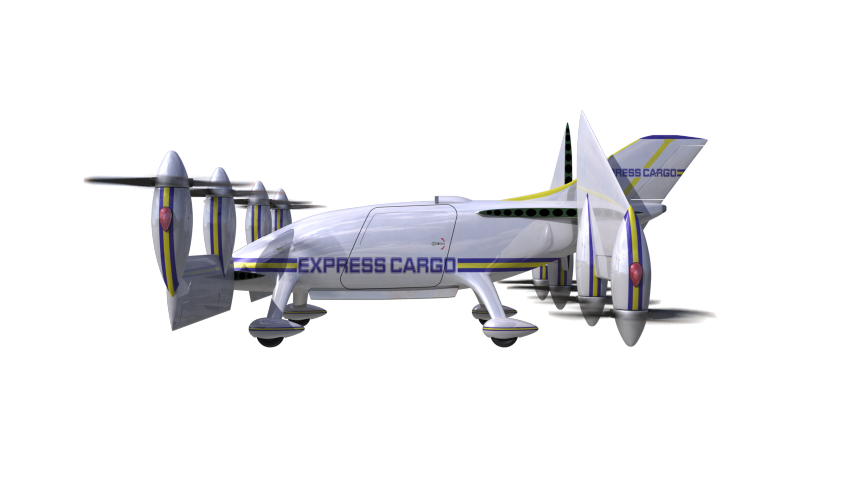
In the Photo: Rendering of a VerdeGo Aero Cargo VTOL . Photo Credit: VerdeGo Aero.
When do you think you will be able to sell your VTOL on the market? Are you planning to sell it to individuals or to airlines?
EB: This is a very good question, and this is one point which differentiates our program – and a lot of the current interest in VTOL – from the previous concept of the flying car. Our aircraft is designed to be sold to customers that are air taxi companies buying fleets of aircrafts. We are not designing the aircraft for the owner-flown market. We are designing the aircraft to be bought by companies in fleets of 50 or 100 aircrafts so they can offer point-to-point service between the vertiports that are around the metro area.
It fundamentally changes the economics of what we are doing because one of the challenges with the traditional concept of the flying car is that you are trying to make a vehicle that has all the requirements of being a car, and all the requirements of being an airplane. And on top of that you have to make it affordable enough so that a reasonable number of people can purchase the aircraft or the car for their own use. This has proven to be a very difficult challenge to solve because aircrafts are fundamentally expensive to buy and produce.
Even though VerdeGo Aero’s VTOL gets called a flying car we are really an aircraft. We don’t drive on the road, we fly from one point in the city where there is a vertiport that can handle passengers and fly them into other vertiports in the city quickly, efficiently and safely. We are designing our VTOL like an aircraft for commercial use. It will be more expensive but also more durable and more reliable. Ultimately the model we are going after is the same one of Airbus and Boeing: they sell some airplanes worth tens of millions of Euros to the airlines around the world who are then able to sell a ticket for 100 Euros to the average person.
We understand that the average person does not have the funds, nor do they want to buy an aircraft to maintain, operate and park somewhere. People just want to be able to buy rides in those aircrafts when they need it the most. Our core markets are the hundreds of millions of busy businesspeople around the world who occasionally – maybe five to ten times per year – have an urgent need to move around one of the large cities in the world and it would be well worth their time and their money to pay to fly in one of these vehicles.
You might be in Manhattan, New York meeting a customer or a business partner and have a flight out of JFK Airport. In this case you may need to leave up to three hours ahead of your travel time because traffic can be slow and unpredictable. You might have to cut that meeting short and sit in a car and wait to get to the airport.
We will be offering them the option to pay for a ride in one of our vehicles and make that journey in less than ten minutes for similar prices to premium ground transportation. That is really the market we are going after.
We are not selling airplanes to the very wealthy as a toy, we are selling fleets of airplanes to local airlines so they are available for the average businessperson around the world when they have those urgent needs to get from point A to point B.
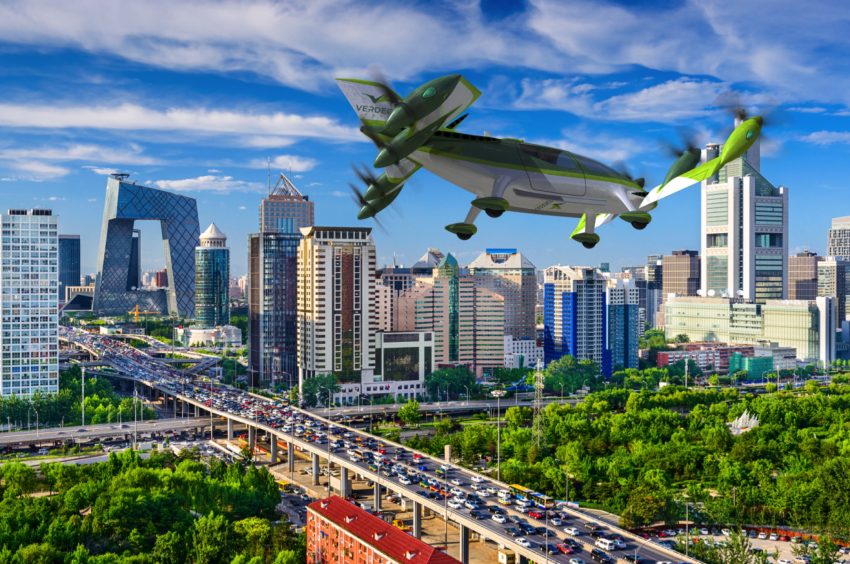
In the Photo: Rendering of a VerdeGo Aero VTOL flying over traffic. Photo Credit: VerdeGo Aero.
Do you have other plans/other ideas in mind for the future? To go fully electric? To make the aircrafts for everyone?
EB: The road map, as I mentioned before, is to take these aircraft from being a hybrid to an electric aircraft and it will go through the evolution of either fuel cells, batteries or super capacitors. We have future versions of this aircraft planned both from a propulsion point of view, as well as for the cargo and passenger markets.
We are looking into larger-scale aircrafts as well, and that offers some new opportunities and new operating economics. It is an important part of our long-term plans, although it is actually beneficial for the on-demand point-to-point transportation market to have the aircraft be small.
In the on-demand mobility world, the average passenger number in a car when they use an on-demand ride sharing app is 1.4 people. That means there are a lot of people travelling either alone or as a couple. If the aircraft is too big, it is not economical to send that aircraft out with just one person on board. You might get to a situation where you have to schedule services, but as a passenger I can’t necessarily show up at the landing pad and expect I can just get into the next vehicle when it is available and go without having to wait for other passengers to arrive and make that flight economical.
In this market there are some benefits for having the vehicles be small, because that means even if you personally want to go somewhere – you are on one side of the city and urgently want to get to the other side of the city for another meeting or for an interview – you can go to that landing pad and know that you don’t have to wait for other people to make that flight efficient. You know that if you are the only one going on that route it will still be efficient.
This is an interesting market because we are blending the history of commercial aviation with the new emerging market of on-demand mobility that has been pioneered by all the app like Uber or Lyft. Some of our operating model has to come from those app and some has to come from commercial aviation.


